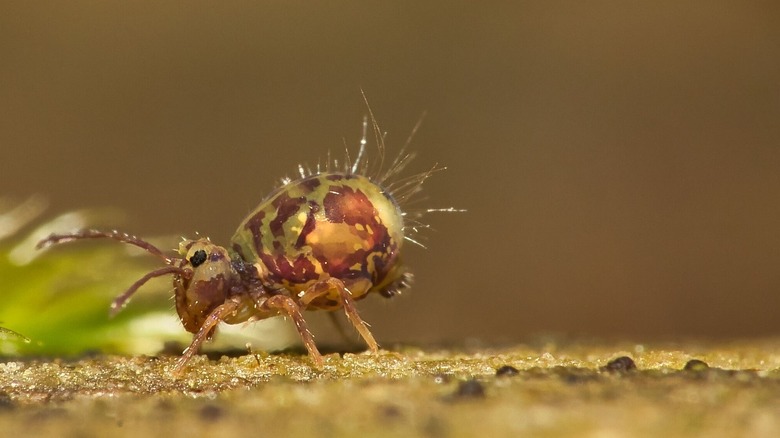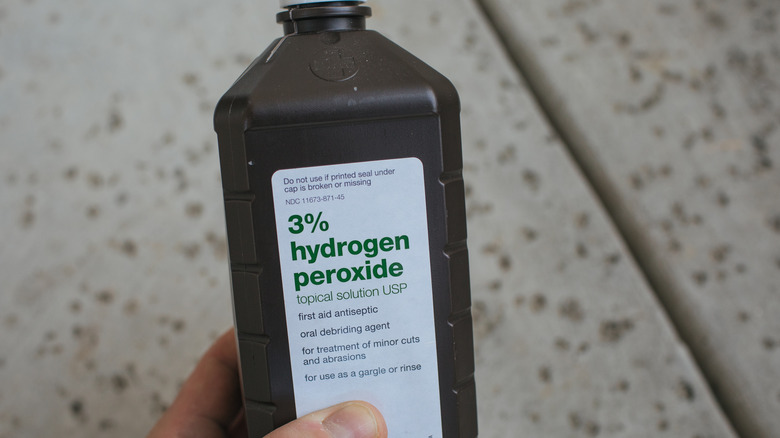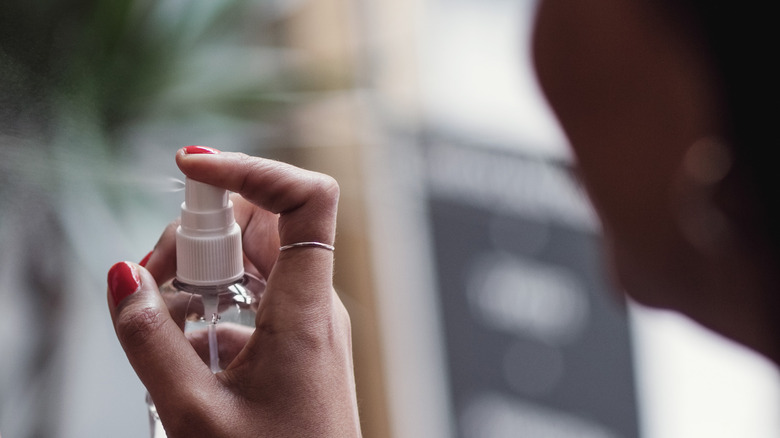Can You Get Rid Of A Springtail Invasion Using Hydrogen Peroxide?
We may receive a commission on purchases made from links.
At first, you notice one or two bugs in the shower, but you reason that they are few, feeble, and inconsequential. The following day, you spot the same bugs on your windowsill and bathroom sink. Although you start to get alarmed, you haven't gone full-on panic mode. Soon — and before you know what's happening — they are crawling on your bedsheets and swarming your headboard. Springtails can freak you out, rob you of your peace, and push you to abandon your house. Although tiny — among the smallest arthropods on Earth — don't underestimate their ability to make their presence known. Scientists say springtails aren't dangerous, but maybe they haven't felt the bugs crawling on their skins in the dead of night.
Thankfully, removing springtails isn't the most difficult job in the world. That is not to say they are easy to get rid of, either. They are stubborn and resilient but not dissimilar to other houseplant pests typically cleared by diatomaceous earth or other simple home remedies. Hydrogen peroxide, often the primary agent in numerous pest-control hacks, may be effective in eradicating springtails as well. Studies show that in certain conditions, hydrogen peroxide can inactivate selected species of arthropods. Indeed, hydrogen peroxide is today approved for managing microbial pests in both indoor and outdoor settings. So yes, hydrogen peroxide has qualities that can make it effective in eradicating springtails.
How hydrogen peroxide works to eliminate springtails
Hydrogen peroxide is a biocide, which means it can destroy harmful or undesired organisms, but how exactly does hydrogen peroxide eradicate springtails? Although we may not have the full picture regarding what happens when hydrogen peroxide is applied to springtails, hydrogen peroxide is known to trigger the oxidation of proteins and lipids. For perspective, oxidation is where oxygen that has been given off — in this case by hydrogen peroxide — goes on to change the structure of other molecules. Bear in mind that cell membranes, the protective layer surrounding every living cell, are made of lipids and proteins. Perhaps you can already guess the effect. Living cells die when their cell membranes are ruptured and damaged, including by being oxidized. That's one way hydrogen peroxide may work to eliminate springtails.
Besides damaging cell membranes, hydrogen peroxide can also damage their DNA, the blueprint for life. Hydrogen peroxide does this by producing a molecule called hydroxyl radical, which scientists believe is the most reactive. Although some of these tiny folks can live for more than one year, with damaged DNA, springtails have nothing to run on; hence, they quickly wither away and die. The last mode is a little indirect: Hydrogen peroxide is an effective mold removal agent. Springtails love moldy environments, even feeding on mold. Hydrogen peroxide, therefore, works by creating an environment where springtails will find it hard to thrive. These properties prove hydrogen peroxide can help you get rid of springtails for good.
How to use hydrogen peroxide to manage springtails.
One challenge with using hydrogen peroxide is figuring out the dosage. Although it has been licensed as a pesticide since 1977, its use in combatting springtails is not based on well-defined dosages. Of course, the scale and magnitude of the invasion will determine how much peroxide to use — and for how long. Some use water and 3% hydrogen peroxide in equal parts, while others have reported success with weaker solutions that involve four parts water to one part 3% hydrogen peroxide. Start with less concentrated dosages, and work your way to more concentrated ones as you continuously observe and assess the effect. Remember, as the solution becomes more concentrated with more hydrogen peroxide relative to the water content, safety precautions become increasingly crucial. Granted, severe injuries have been rare and far between, but highly concentrated hydrogen peroxide can burn and blister the skin. Also, you'll not want kids or furry companions to stumble on your hydrogen peroxide. Just put it out of reach.
Needless to mention, don't pour out your diluted hydrogen peroxide solution from a bucket. Instead, get a spray bottle, fill it with your undiluted 3% hydrogen peroxide, then add the amount of water that'll bring the solution to the ratio you're aiming for, whether 1:4 or 1:3. Two sturdy, easy-to-use, 16 oz plastic spray bottles go for less than $10 on Amazon. Something else: only work with the quantity you intend to use. If already diluted with water, hydrogen peroxide solutions break down quickly. Concerned that it will bleach your wooden floor? No chance. Expect your wooden floor to keep looking like new unless you use an outrageously concentrated solution and your floor is really dark.


